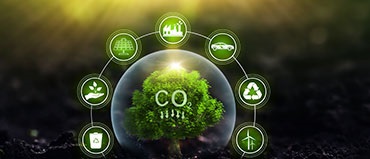
The key drivers for the waste management market include stringent regulations of governments worldwide for better management of waste and initiate environmental protection; strong focus of several governments to conduct awareness programs showcasing importance of waste segregation and waste management; technological advances and shortened life cycle of electronic products help in increasing e-waste.
According to a latest research, the global waste management market size is projected to reach USD 542.7 billion by 2026 from an estimated value of USD 423.4 billion in 2021, at a CAGR of 5.1%.
This research report categorizes the waste management market based on Waste Type, Service Type, End User, and Region.
Based on the waste type:
- Hazardous Waste
- E-waste
- Plastic Waste
- Bio-medical Waste
- Others
Based on the service type:
- Open Dumping
- Incineration/Combustion
- Landfill
- Recycling
- Composting & Anaerobic Digestion
Based on the end user:
- Residential
- Commercial
- Industrial
Based on the region:
- North America
- Asia Pacific
- Europe
- Middle East & Africa
- South America
Challenge: Recycling plastic is costlier than producing new plastic
The basic raw materials required to manufacture virgin plastics are petrochemicals such as oil and natural gas. The recycled form of plastic is polyethylene terephthalate (PET). The problem associated with recycling plastic is the generation of a pure stream of recycled material. PET plastics do not have a residual value; they can, however, be recycled into other products, such as new containers and fleece clothing. Several additives are added while manufacturing plastic products; some of these are fillers and colorants. The recycling companies are not usually aware of what is added to plastic, which affects the recycling of plastic products.
The key players in the waste management market include companies such as Waste Management (US), Veolia (France), Republic Services (US), SUEZ (France), and Waste Connections (US). Major strategies adopted by the players are product launches, contracts, agreements, collaborations, partnerships, and mergers & acquisitions, from January 2018 to June 2021. Contracts was the most commonly adopted strategy.
Ask Sample Pages @ https://www.marketsandmarkets.com/requestsampleNew.asp?id=72285482
Asia Pacific is expected to be the largest and fastest-growing market during the forecast period.
Asia Pacific accounted for the largest share of the global waste management market in 2020. The region has been segmented, by country, into China, Japan, India, Australia, South Korea, and Rest of Asia Pacific. Rest of Asia Pacific mainly includes Singapore, Malaysia, Thailand, and Indonesia. The population growth in the region, the high disposable income of the people, and the increased demand for packaged food products are among a few major factors that drive the growth of waste management in the region. Asia Pacific is also a key contributor to marine plastic pollution. The materials involved include plastic bottles, plastic bags, single-use plastic items, and plastic packaging, among others. Key countries responsible for this kind of pollution include China, Indonesia, and Thailand.


